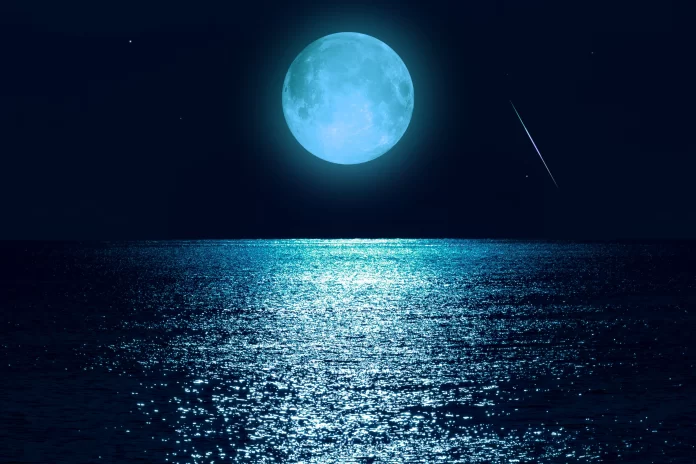August 19 supermoon blue moon rising: where to see it and how to have the greatest view
August 19 is scheduled to be the first of this year’s four consecutive supermoons. This is all the information you require to fully enjoy the cosmic event.
There is good news for everyone who has been anxiously awaiting the next major cosmic event. As previously stated, four consecutive supermoons are predicted for this year. Taking place on Monday, August 19, at 2:26 PM EDT (about 12:00 AM IST), is the first of the four. It’s interesting that this Supermoon Blue Moon will occur.
For those who are unaware, a supermoon happens when the moon is within 90% of its closest approach to Earth, according to NASA. Astronomer Richard Nolle first used the phrase “supermoon” in 1979. It is well known that full supermoons are the largest and brightest full moons of the year. It looks to be around 14% larger and 30% brighter than a typical moon. Even though the brightness and size may appear noticeably higher, it might be challenging to distinguish between them during the phenomena.
SRM Institute of Science and Technology
However, there are two different kinds of Blue Moons, and none of them are related to the color blue. A seasonal blue moon occurs when there is a third full moon during a season with four full moons. On August 19, a blue moon of this kind will be visible. The second kind is associated with the second full moon in a given month of the calendar. Beginning in 1528, the first Blue Moon was noted in English dates. The archaic expression “betrayer moon” is thought to be the source of the term Blue Moon. The term “Blue Moon” was first used in the 1940s to describe the second full moon of a month that had two full moons.
Over time, supermoons have drawn more attention because of their size and brilliance. In September and October will come the next full moon.
Where will the Blue Moon supermoon be visible?
According to researchers, even though the full moon rises on August 19 at 2:26 PM EDT, it will still appear almost full on evenings leading up to that day. The supermoon Blue Moon is visible from anywhere in the world, though the exact time it is seen will vary according on location and time zone.
The Super Blue Moon will peak in North America on August 19 at 2:26 PM EDT. However, NASA reports that it will appear full here for around three days, from Sunday morning until early Wednesday morning. On August 18, 19, and 20, it will be visible. In the meantime, the full moon will appear in Asia and Australia on August 20 in the morning, moving eastward from Nepal Standard Time across the remainder of Asia and Australia to the International Date Line. The night of August 19 and the early hours of August 20 will be when we can see it in India.
The night of August 19 will see the Super Blue Moon visible to people in Europe and Africa. Starting from August 18 in the evening and continuing through August 19 and early August 20, it will appear full.
Here are some pointers for securing the finest supermoon blue moon view:
Choose a spot where there is less air pollution and a good view of the horizon to obtain the finest view of the supermoon. According to experts, the supermoon will be visible soon after it rises in the southeast and east of the sky. It is crucial that you choose a space that is open and free of city lights because of this.
Even while a supermoon can be seen with the unaided eye, a telescope or binoculars can improve the view by highlighting more features on the moon’s surface. Always keep in mind that the optimum viewing conditions require clear skies. To make sure there are no clouds obstructing your view, you should check the local weather forecast.
It’s recommended by experts to allow your eyes some time to acclimate to the darkness. Over time, vision will get better; color vision will adjust in 10 minutes, while black-and-white vision will take at least an hour to improve. To preserve your night vision, it is advised that you limit your exposure to bright lights.
In addition, while the moon is getting close to the horizon, something known as the “moon illusion” occurs. This can make the moon appear larger, which makes it the perfect time for taking pictures or just taking in the scenery. When the moon is either rising or setting, the impact is most pronounced.



































